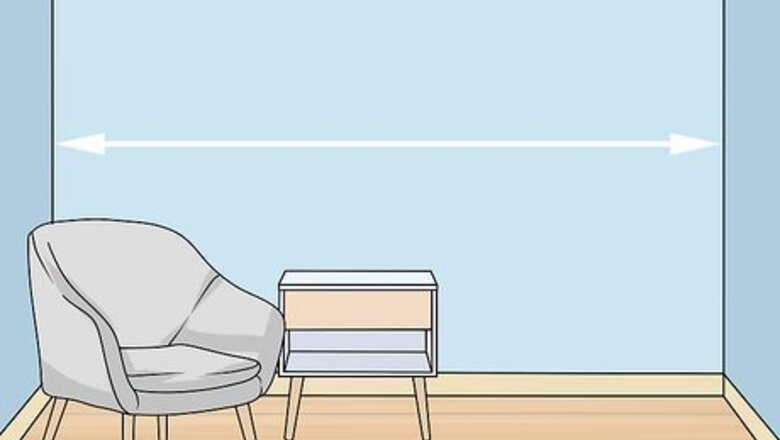
views
Measuring the Wall Surface Area
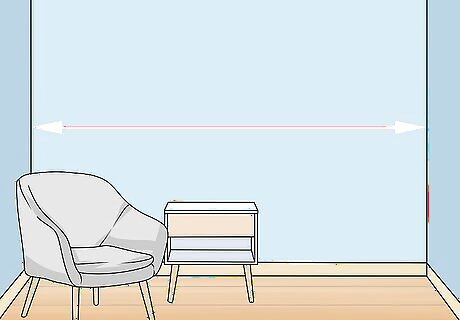
Measure the length of each wall you plan on wallpapering. Put the end of a tape measure in one of the corners of your wall, and extend it toward the other side. Once you reach the other end, write down the measurement rounded up to the nearest whole number so you have a little extra when you need to calculate. Continue finding the lengths of each wall you plan on putting wallpaper on, and write each of them down so you don’t forget. For example, if the length of one wall is 119 ⁄4 inches (302.9 cm), then round it up to 120 inches (304.8 cm). If your room is rectangular, then you only need to find the lengths of 2 walls since the ones on the opposite side of the room will be the same measurement.
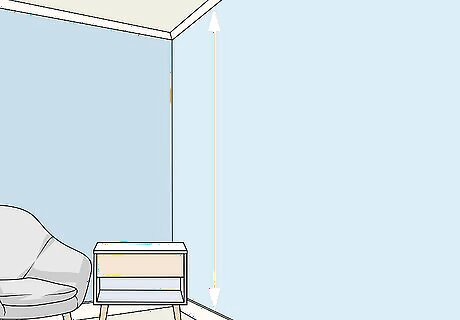
Find the height of the walls you’re putting wallpaper on. Find the highest point of your wall and take your measurement there so you don’t underestimate what you need. Place the end of your tape measure against the wall and extend it up toward the ceiling. Keep pulling the tape measure out until it reaches the floor so you can find the measurement. Round your measurement up to the closest whole number so you can have some excess wallpaper. For example, if your wall is 95 ⁄2 inches (242.6 cm) tall, round it up to 96 inches (243.8 cm) instead.
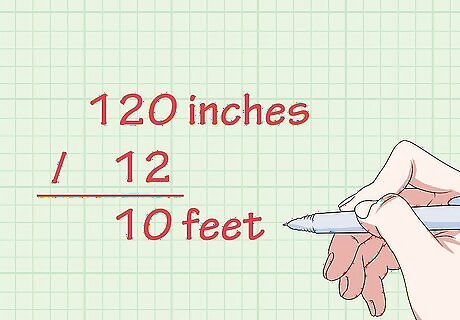
Convert your measurements to feet or meters. Since wallpaper is usually measured in square feet or meters, you need to convert any measurements you took. If you were measuring the lengths and width in inches, divide each of your measurements by 12 to find the total distance in feet. If you found the length in centimeters, divide the measurements by 100 to calculate the wall dimensions in meters. For example, if your wall is 120 inches (304.8 cm) long, divide it by 12 inches (30.48 cm) to find it’s length in feet or meters, which is 10 feet (3.0 m).
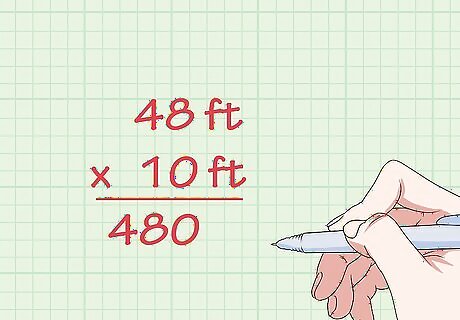
Multiply the total length of the walls by their height to find the surface area. Add the lengths of the walls you measured to find the total perimeter that you’re covering with wallpaper. Multiply the total perimeter by the height of the wall so you can find the total surface area of the room. Use a calculator if you need to so you can find out exactly how much area you need to cover. For example, if your total perimeter was 48 feet (15 m) and the height was 10 feet (3.0 m), then the total surface area equals: (48)(10). Multiply the numbers together to find the solution: (48)(10) = 480 square feet (45 m).Tip: You don’t need to subtract the surface area of your doors or windows since it’s better to have some extra paper rather than too little.
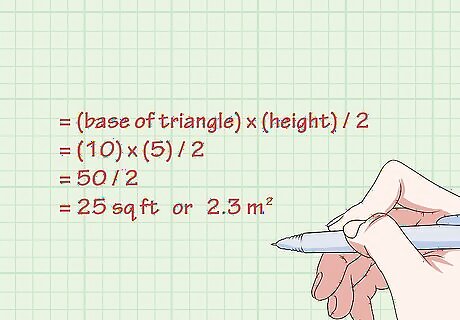
Calculate any sloped walls if you have any. If your walls come to a point at the ceiling or are shaped like a triangle near the top, you may need to take different measurements. Find the length from one of the bottom corners of the triangle to the other bottom corner to measure the base. Then, measure from the top point of the triangle down to the base to find the height. Multiply the length of the base and the height of the triangle together, and then divide the result by 2 to find the surface area. For example, if the base of the triangle is 10 feet (3.0 m) and the height is 5 feet (1.5 m), then the surface area is (10)(5)/2. Simplify the equation: 50/2 = 25 square feet (2.3 m).
Determining the Number of Wallpaper Rolls
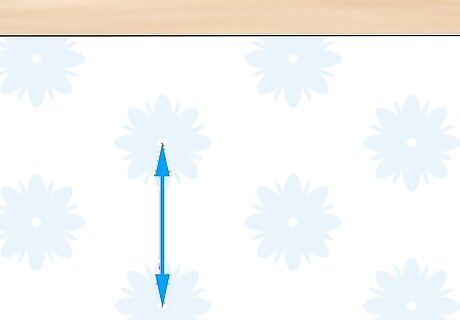
Measure the distance between repeating patterns on your wallpaper. Look at the edge of the wallpaper roll you have to find 2 identical parts of the pattern. Hold the end of your tape measure on a point in the pattern and extend it to where the pattern repeats itself. Write down your measurement so you can estimate how many rolls you’ll need for your wall. For example, if your wallpaper pattern has flowers on it, measure the vertical distance from the center of one flower to the center of an identical flower. If the wallpaper has a random pattern or is non-repeating, then you don’t need to find any measurement. Many times, the pattern repeat for your wallpaper will be printed on the packaging.
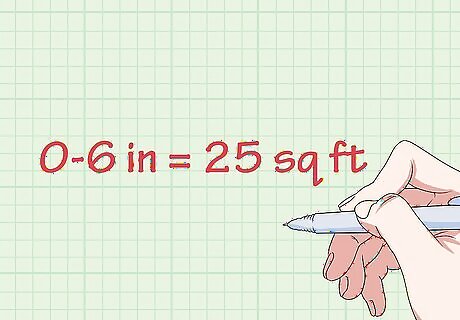
Find the amount of usable wallpaper per roll based on your pattern measurement. Even though the total surface area is listed on the wallpaper packaging, the amount that’s usable varies depending on the pattern and how much you need to trim to make it line up. After you find the measurement for the pattern repeat, use the following to calculate how much usable wallpaper there is per roll: If the pattern repeat is 0–6 inches (0.000–15.24 cm), then there is 25 square feet (2.3 m) of usable wallpaper. For a pattern repeat between 7–12 inches (17.78–30.48 cm), then you can use 22 square feet (2.0 m) of wallpaper. If the repeat is 13–18 inches (33.02–45.72 cm), then use 20 square feet (1.9 m) of wallpaper. For a pattern that repeats every 19–23 inches (48.26–58.42 cm), then there is 15 square feet (1.4 m) of usable wallpaper. While wallpaper rolls may be different widths, they cover the same total surface area.
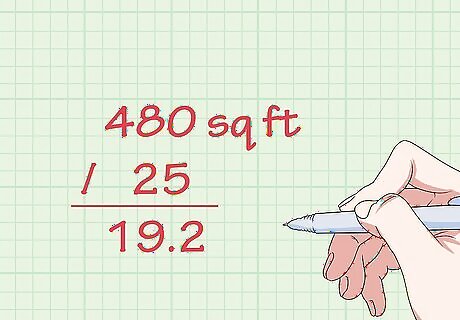
Divide the total surface area by the amount of usable wallpaper per roll. Use a calculator so you can easily find the result, and round it up to the nearest whole number so you have enough wallpaper. If you want, add another additional roll to the amount you need in case you make a mistake or need to make a repair in the future. For example, if your total surface area is 480 square feet (45 m) and each roll gives you 25 square feet (2.3 m) of usable wallpaper, then 480/25 = 19.2. Round the answer up to the nearest number. So, you would need 20 rolls total to cover your wall. Wallpaper is sold in single and double rolls. For example, in the previous calculation, you can buy either 20 single rolls or 10 double rolls to cover the same area.
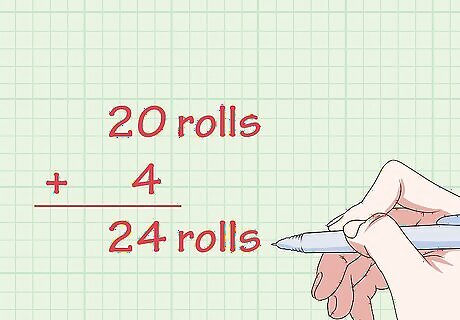
Add an additional 10-20% to account for any waste. Look at the total number of rolls you need based on your calculation and multiply it by 0.1 or 0.2 to find 10-20%. Add the number of additional rolls to your order so you have excess in case you make a mistake or need to make repairs in the future. For example, if you needed 20 rolls to complete your project, get another 2-4 rolls in case you need them. Bring your estimate into a wallpaper retailer and have them double check your estimate to ensure that you have enough for your job.Tip: Make sure you order all of your wallpaper from the same batch since others could vary slightly in color and pattern.














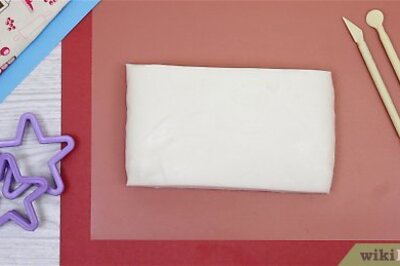

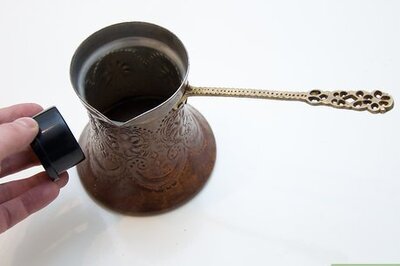



Comments
0 comment